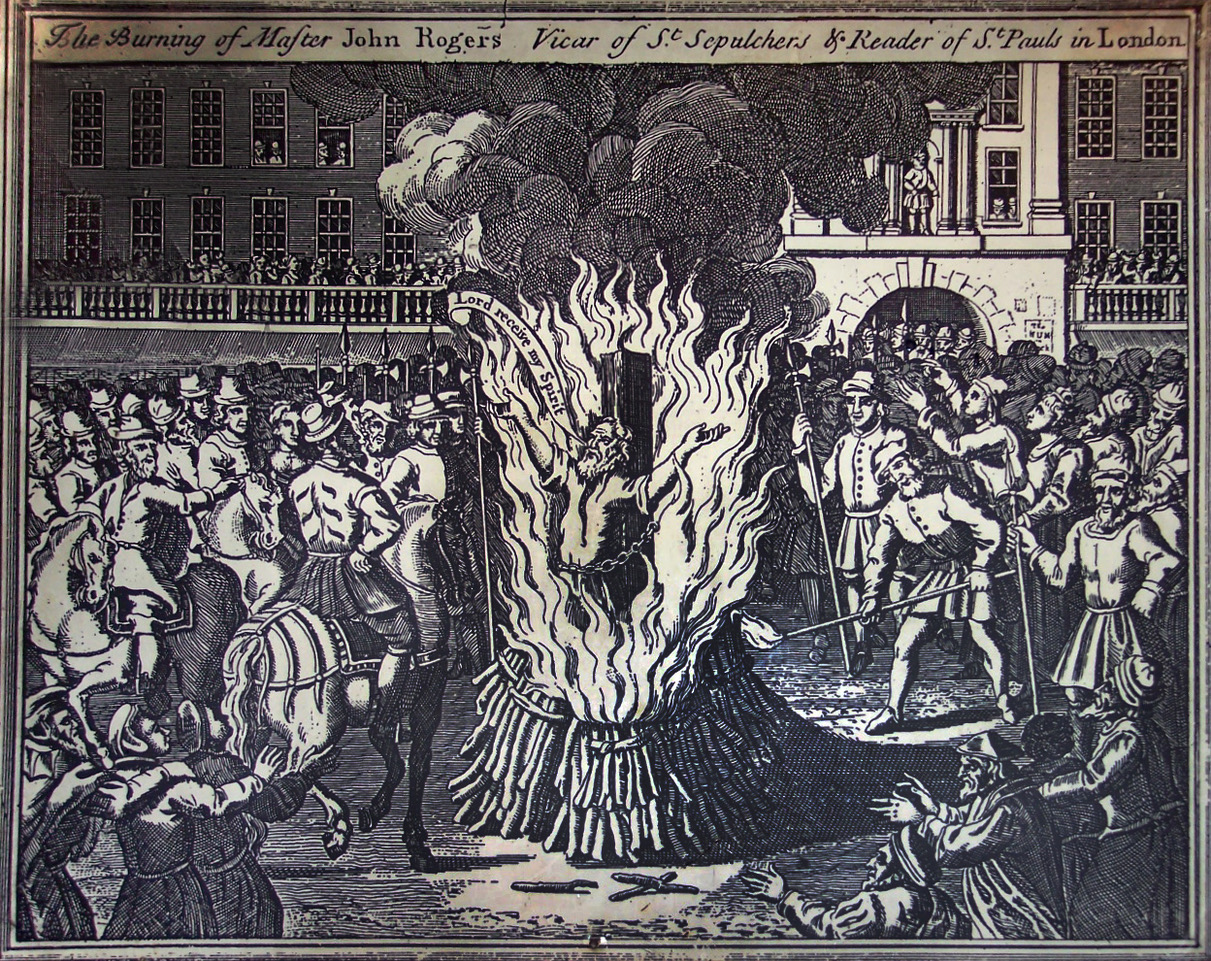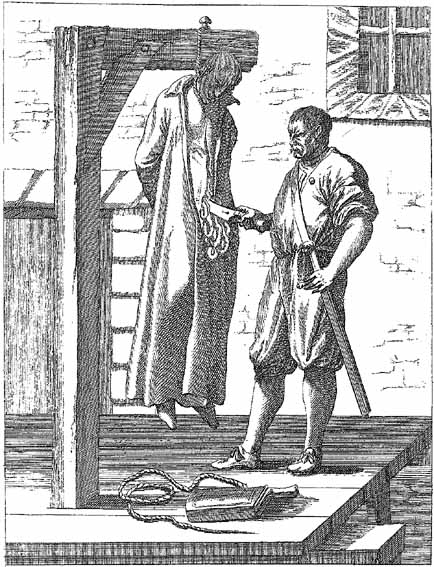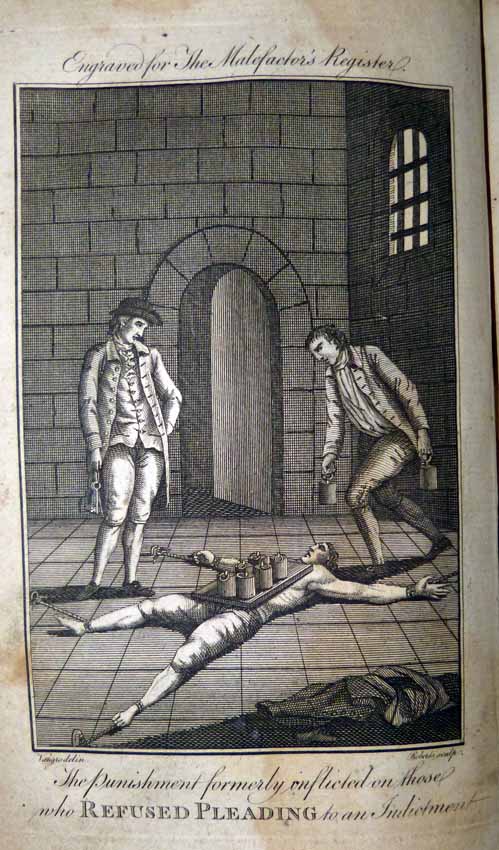Author Guest Post: April Taylor
THE FIVE MOST SHOCKING TUDOR PUNISHMENTS
Boiling to Death:
In 2012, on Venice Beach in California, for a prank, students scrunched up laxatives in Pringles crisps and left them for the seagulls to eat.
In 1531, Bishop Fisher of Rochester’s cook, Richard Roose, decided to play a similar prank on his master’s guests. One guest died, and the remnants of the meal put out for the poor ended up killing a woman. Henry VIII, then at the height of his passion for Anne Boleyn, sought a divorce from Katherine of Aragon. Bishop Fisher, a vocal opponent of the divorce, was presented as the would-be victim of a Boleyn conspiracy to poison him.
Henry VIII forced Parliament to pass the Acte for Poysoning, making it high treason for a servant to poison his/her master.
Roose was convicted without a jury being present. He was brought to Smithfield on 5th April 1532, and lowered by a chain in and out of boiling water until he was scalded to death. He “roared mighty loud”—as would any of us—and several women in the late stages of pregnancy had to be carried away half dead with shock. Most onlookers preferred a good hanging or beheading. Edward VI repealed the act in 1547.
Burning to Death

The victim was tied to the stake and the wood piled around him/her was then set alight. Many times, the wood chosen was young and green, so the prisoner suffocated, or a sympathiser slipped the victim a drink with a soporific or quick-acting poison in it.
Joan Bocher had been an Anabaptist for years. Anabaptists not only opposed infant baptism but denied that Christ was divine or born of the Virgin Mary. They denounced anybody who owned property, believing that all things should be owned by everyone in common.
Joan began circulating pamphlets that were abhorrent to Catholics and Protestants alike. She was examined by Bishop Ridley and clergyman, John Rogers, who attempted to persuade her to recant. When she refused, Rogers declared she must be burned at the stake. John Foxe, also a clergyman, tried to persuade Rogers to spare Joan. He refused, citing that being burned was gentler than many other forms of death. How heartening to know he got the chance to find out when Mary I burned him five years later.
Even Cranmer could not persuade Joan to recant. She was executed on 2nd May 1550 still rebuking anyone who tried to convert her.
Hanging, Drawing and Quartering

Possibly the most appalling method of execution, hanging, drawing, and quartering involves the victim being drawn by a hurdle to the place of execution, before being half-hanged and, while still conscious, his genitals and intestines being carved out from his body and burned before his eyes. As a special refinement, executioners were taught to cauterise the ends of the intestines to keep the victim alive and conscious enough to suffer his heart being ripped out and also burned.
Francis Dereham was a man on the make. And the person he wanted to make it with was the grand-daughter of the neglectful Dowager Duchess of Norfolk, Katherine Howard. After a neglected childhood, she came to the attention of Francis Dereham. Soon the nighttime slumbers of the servants were interrupted by panting emanating from Katherine’s bed. When made aware, the Dowager Duchess sent her to court where Henry VIII’s lascivious eye soon landed on her. She became his fifth wife. Dereham was among many who blackmailed the new queen—probably only about 16 years old. Long story short, Dereham became jealous of Thomas Culpepper, a favourite courtier of the king, and new favourite of the queen. Dereham got drunk and blabbed. Thomas Cranmer, Archbishop of Canterbury, who hated the Catholic Howards, was informed of the gossip and lost no time in telling the king. Dereham was hanged, drawn and quartered.
Hanging in chains

Hanging in chains is, literally, that. Until the victim slowly suffocates over several days. Their remains were left hanging, sometimes for years, until nothing was left after the depredations of birds etc. The felon would know that their body would never be buried and they would never reach heaven. Sometimes bodies were stolen by the family of the victim and secretly buried.
Robert Aske, one of the leaders of the Pilgrimage of Grace in 1537, did his best to negotiate a peace with Henry VIII who promised him his life. Then, in typical Henry fashion, he reneged the instant he knew the rebellion was over and ordered Aske to be hanged in chains in York. Aske took several days to die, being slowly suffocated to death.
Carthusian monks, from the London Charterhouse, were also chained to posts and left to starve to death for refusing to take the Oath of Supremacy in 1535.
Pressing to death

Also known as Peine forte et dure. Pressing was introduced to force defendants into entering a plea in court, which meant anyone who refused would be laid on a stone floor, usually naked; their arms and legs would be splayed and a board laid on their chests. Increasingly heavy weights would be placed on the board until the sufferer either agreed to enter a plea or suffocated to death.
Margaret Clitheroe was brought up a Protestant but converted to Catholicism around 1574. She had her children educated by Catholic tutors, but, although her Protestant husband paid her fines she was hauled off to prison in York in 1586 after a search of her home. Refusing to enter a plea, she was stripped naked and in a toll booth on the Ouse bridge in York, she was pressed to death with weights of around 400Kg. She took around 15 minutes to die, and, to add an extra layer of tragedy, it was known at the time she was pregnant and should not have been executed until after her child was born.
…………………………………………………………………

Crime and Punishment in Tudor England is available to order here.

